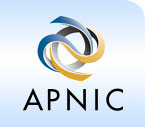IRR Scalability
Kuniaki Kondo, IRR workshop, JPNIC
Circumstances:
At the prevoius Routing-SIG in Apricot, Seoul, I identified certain changes happening to operations of IRR and some problems due to these changes.
Since then, the movement hasn't changed, while the number of IRR servers is still increasing, and IRR data continues to scatter.
JPNIC IRR workshop held a research on the following issues considering this environment.
- Estimation of the number of IRR objects which can be mirrored;
- Comparison between real routes and route objects;
- Research on use of IRR information;
- Analysis on IRR systems;
- Analysis on difference between IR whois system and IRR system.
Currently, the workshop is studyingan ideal architecture for the IRR system.
Proposal:
At present, the number of IRR servers is over 37 based on Merit IRR server list. Among these servers, the number of servers which disclose information and which can be easily mirrored by others is 29. Nearly half of these servers register less than 10 objects.
We mirrored these open servers, and analyzed the Information contained in them. As a result, the increase in the number of IRR objects falls behind the increase in the number of real routes. Furthermore, the difference between them gets wider day by day. We found out that, currently, only 50% of the real routes are registered in IRR servers.
This result is probably the same for AS registration. We concluded that IRR servers are not satisfactory as a database for filtering or for searching administrative information.
To improve the environment by allowing the IRR users to access the right information and by making the IRR operators to gather the right information, we think that we need the following actions.
Aggregation of IRR Servers
Random distribution of IRR information among many IRR servers requires wasteful efforts by both users and operators. Thus, both physical and logical distribution of IRR servers should be well designed, and each IRR server should manage a different space with a certain mirroring topology managed under an appropriate organization.
Encouragement of IRR information registration
As described above, the number of registered information in IRR servers is currently about 50% of the number of real routes, which will cause confusion if they are used for network operation. Thus, there needs to be a mechanism to accelerate registration which matches the real environment.
Update of information
Registered information is valuable only when they are updated correctly. Currently, there are many un-announced routes and many invalid contact information registered. Thus, there needs to be some mechanism to check correctness of the registered data.
Considering that it is very difficult to solve all of these problems in parallel, we need to set priorities.
In this presentation, we would like to concentrate on a suggestion for aggregation of IRR servers in the AP region.
We would also propose the following issues in details.
- Suggestion for implementation of an IRR server at APNIC
- Supporting area
- Operation Policy
- IRR server system
- System requirements
- Mirroring procedures
 Back to Documents Index Back to Documents Index |
Back to SIG Index  |

